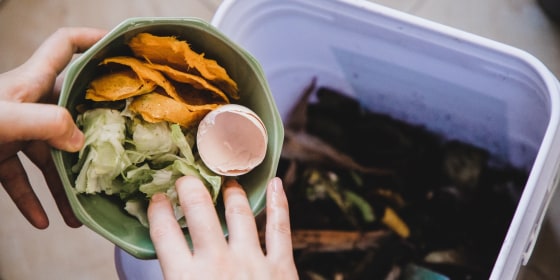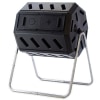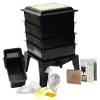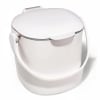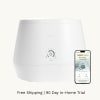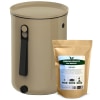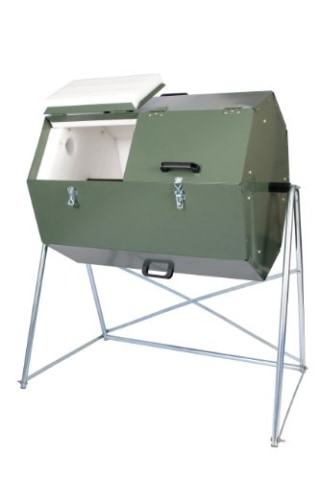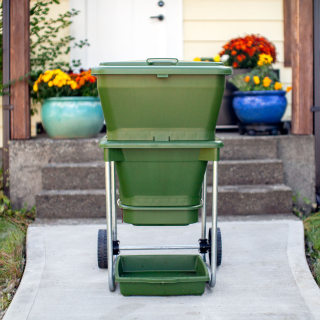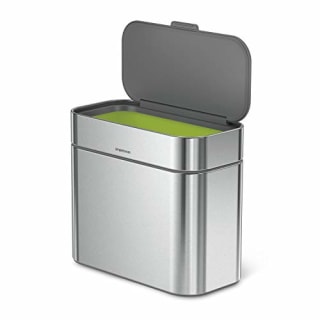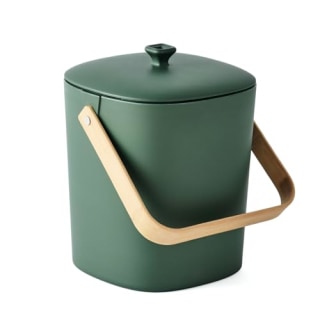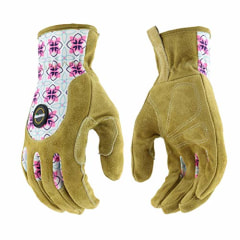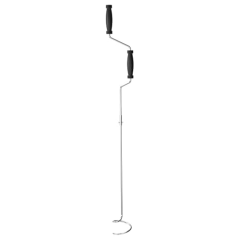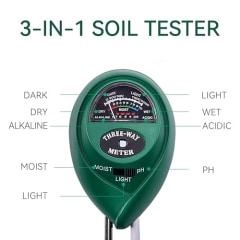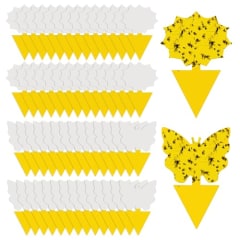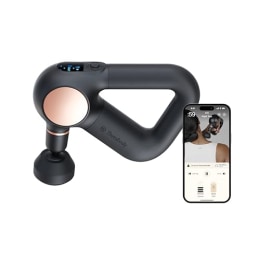Want to take your garden to the next level? Composting benefits the environment, plus, it’s a fun way to nourish your plants for the best growth possible.
If you’re new to composting, I talked to three experts about how to pull it off successfully: Amy Enfield, a senior horticulturist at ScottsMiracle-Gro with a PhD in Plant & Environmental Sciences from Clemson University, Julie Bawden-Davis, the publisher and founder of HealthyHouseplants.com and a University of California certified Master Gardener, and Carmen DeVito, the founder of garden and landscape design company Garden Cult and a certified New York State landscape professional. I also gathered a list of the best at-home compost bins that align with their guidance.
Want more from NBC Select? Sign up for our newsletter, The Selection, and shop smarter.
The best compost bins
Aside from organic materials, you’ll need a bin to compost at home. I asked experts for their recommendations and also chose highly-rated options from trusted retailers across the web. I also go into more depth about each type of composting below.
Best overall compost bin: FCMP Outdoor Tumbling Composter
- Affordable price
- Aeration holes
- Interior fins
- Not secured from pests
This tumbling composter from FCMP Outdoor comes recommended by DeVito for gardeners on a budget with limited outdoor space. It’s made from 100% recycled plastic and holds up to 37 gallons of compost, according to the brand. Like the Jora composter below, it has a dual-chamber, along with a removable door that makes it easy to add scraps and remove your compost when it’s finished. This compost bin also has aeration holes on the exterior and fins on the interior, which help to break up clumps and mix the compost, according to FCMP Outdoor.
Type: tumbling, hot, cold | Material: plastic | Size: 30”L x 28”W x 36”H | Indoor or outdoor: outdoor | Compost capacity: 37 gallons
Best large compost bin: Jora JK270 Composter
- Rust-resistant
- Dual-chamber design
- Speeds up process
- Very pricey
DeVito recommends this tumbler composter from Jora for larger families or intermediate gardeners. It’s made from a rust-resistant galvanized steel and has a dual chamber design that allows for you to insert fresh material on one side while compost on the other side continues to mature and decompose, according to the brand. The tumbler is insulated and sealed to prevent odors and keep the temperature high, and includes rotation handles to make aerating your soil easier. It can hold up to 71 gallons of compost, and is elevated to protect against rodents, according to the brand.
Type: tumbling, hot, cold | Material: metal | Size: 44.5”L x 28”W x 50”H | Indoor or outdoor: outdoor | Compost capacity: 70 gallons
Best overall worm farm: The Worm Factory 360
- More affordable
- Customizable design
- Compact size
- Requires turning
This worm farm is a more affordable option, and has a 4.5 star rating from 1,836 reviews on Amazon. Its compact, small space-friendly design also has a simple, user-friendly setup, according to the brand. The farm is fully customizable — its nested tray design includes four separate trays that can be added or removed as you like.
Type: vermicompost | Material: plastic | Size: 17.95”L x 17.95”W x 14.95”H | Indoor or outdoor: indoor | Compost capacity: 0.26 gallons
Best large worm farm: Hungry Bin Continuous Flow Worm Composter
- Food-safe materials
- No turning needed
- Wheels included
- Pricey
If you’re looking to try vermicomposting, DeVito says this worm composter from Hungry Bin is beginner-friendly and can be used year-round. The bin is made from food safe- and BPA-free plastic, and can process up to 4.5 pounds of worm waste per day, according to the brand. It also has wheels that make it easy to move around, and it doesn’t require any mixing or turning like other composters; your scraps are pushed through the bin, and, as they’re processed by the worms, are compressed into castings and kept in the lowest part of the bin for you to easily remove when needed, says Hungry Bin. This composter also comes with a 16-week feeding timeline guide to help you increase and maintain your worm farm population.
Type: vermicompost | Material: plastic | Size: 25”L x 24”W x 35”H | Indoor or outdoor: outdoor | Compost capacity: 97 gallons
Best electric compost bin: Lomi 2 Food Recycler
- Fast composting
- Relatively affordable
- Odor prevention
- Pricey for beginners
Electric composters speed up the composting process using heat, air and mechanics to break down food scraps in just a few hours or days. Most are on the pricier side but DeVito recommends the Lomi 2 as a reliable and more economical option. It has an airflow system that continuously allows in oxygen, and has a dual-filter design that helps to stop odor. It also includes a starter-pack of odor-eliminating filters and a one-year warranty, according to the brand.
Type: electric | Material: recycled plastic | Size: 16”W x 13”D x 12”H | Indoor or outdoor: indoor | Compost capacity: 0.8 gallons
Best tabletop compost bin: OXO Good Grips Easy-Clean Compost Bin
- Multiple sizes
- Affordable
- Easy to use
- Odor may leak out
This compost bin from OXO is designed to be convenient for everyday, countertop use, according to the brand. It has a flip-up, removable lid that locks to keep odor inside, and a rotating handle that makes it easy to carry the bin in and out of your space. It has a 4.6-star average rating from 17,236 reviews on Amazon and comes in two sizes: 0.75 gallons and a larger, 1.75 gallon model.
Type: hot | Material: plastic | Size: 7.8”L x 7.9”W x 7.6”H | Indoor or outdoor: indoor | Compost capacity: 0.75 gallons
Best stainless steel compost bin: Simplehuman Compost Caddy
- Removable inner bucket
- Sealing lid
- Easy to clean
- Nothing to note at this time
Simplehuman’s stainless steel compost bin can be hung on the side of your trash can with a magnetic system that also allows it to easily detach when needed, according to the brand. This compost caddy also makes emptying easier — it has a removable inner bucket that can be quickly removed to dump compost. The bin is highly-rated with a 4.5-star average rating from 1,681 reviews on Amazon, and the lid is also designed to seal softly, which keeps pests out and odor in, according to the brand.
Type: hot | Material: stainless steel | Size: 9.6”L x 5.7”W x 8.5”H | Indoor or outdoor: indoor | Compost capacity: 1.06 gallons
Best Bokashi compost bin: TeraGanix Bokashi Compost Bin
- Quicker compost time
- Odor-free
- Easy to use
- Nothing to note at this time
You can use this year-round option to create compost in as little as under two months, according to the brand. It has a built-in tap for easily extracting the Bokashi “tea” the bin produces, and also has an airtight lid to keep bugs out, according to the brand. The bin also includes a one pound bag of compost starter with purchase.
Type: Bokashi | Material: recycled plastic | Size: 13”L x 10”W x 10”H | Indoor or outdoor: indoor | Compost capacity: 2.5 gallons
Most stylish compost bin: Bamboozle Countertop Compost Bin
- Affordable
- Can fit on countertop
- Nice design
- Nothing to note at this time
This countertop compost bin is both effective and aesthetically pleasing, and has a 4.2-star average rating from 2,005 reviews on Amazon. It has a removable lid that’s designed to filter odor, and has a replaceable filter that helps to keep smells from escaping, according to the brand. Each filter lasts up to two months, and is dishwasher-safe. The bin is also one piece, making it easy to clean, and is made from a leak- and rust-resistant biodegradable plastic, according to the brand.
Type: Bokashi | Material: | Size: | Indoor or outdoor: indoor | Compost capacity: 1 gallon
The best composting accessories
There are a couple of essentials you may want to keep on hand while composting at home. This list includes gloves, insect traps and more, all of which are highly rated with at least 4.0 stars from reviews.
What is composting?
Composting is a natural recycling process involving the decomposition of organic materials over time by microorganisms, fungi and insects, says Enfield. The resulting substance, according to Bawden-Davis, is a nutrient-rich additive for soil and plants, making it a worthwhile investment for serious home gardeners, or anyone looking to cut back on their food waste.
You can compost a wide range of materials, which fall into one of two categories:
- Carbon ingredients, also known as “brown” materials, consist of drier plant-based materials, like dried leaves, shredded paper or cardboard (which can have ink, since experts say most modern inks are non-toxic), sawdust and straw.
- Nitrogen ingredients include wetter, “green” materials like scraps from fruits and vegetables, coffee grounds, and grass clippings.
Enfield suggests skipping yard or grass trimmings that’ve been treated with chemicals like pesticides or herbicides to your compost mixture, along with meat and dairy products, oily/greasy food waste, pet waste, diseased plants or any non-biodegradable material (plastic, glass, metal etc.).
Types of composting
There are different types of composting, all of which have different methods and timeframes. These are some of the most common:
- Hot composting uses high temperatures to help decompose material, and needs a 1:2 ratio of nitrogen-rich to carbon-rich materials, says Enfield. It should be regularly mixed (which aerates the compost) every two to three days, and should be kept at a higher moisture level than other types.
- Cold composting has a more laid-back approach than hot composting, according to Enfield. The ratio is the same, but she says it’s less important in this instance — what really matters is making sure the compost is kept in a shaded, well-drained area. Cold composting can also work at any temperature, but is most active between 50-70 degrees Fahrenheit and doesn’t require as frequent mixing as hot composting, she says.
- Vermicomposting is a method that uses red worms to break down organic matter, says Enfield, typically in the form of worm farms that can be stored around your home. According to Bawden-Davis, it’s “the top way to create compost indoors.” The worms eat your scraps/materials and produce organic waste, which can then be used on your soil. Since worms naturally aerate the mixture, you also don’t have to do a lot of turning with vermicomposting — you only need to move around the top few inches of soil every once in a while.
- Bokashi composting is a fermentation-based method that proceeds food waste to create a compost tea, says Enfield. She calls this tea a “pre-compost” since it needs additional time for full decomposition in the soil. Since it can be done on a kitchen counter with a small composter, it’s ideal for those with limited outdoor space.
How to compost at home, step by step
The exact process of your at-home composting will depend on which method you use. Below, Enfield outlines a step-by-step process of at-home composting that works well for hot and cold composting:
- Choose a method: Decide which method of composting (hot or cold) you’d like to use, and place your compost bin (or compost pile) in a well-ventilated area.
- Layer your materials: When placing materials in your compost, Enfield suggests using alternating layers of green and brown materials. For example, putting down one layer of food scraps followed by a layer of leaves and shredded paper.
- Keep it moist: Be sure to maintain your compost’s moisture, which helps with the material breakdown process. Enfield says the moisture level should be damp but not wet, “like a wrung-out sponge,” and that the compost should be watered if it gets too dry.
- Turn the pile: Adding oxygen to your compost mixture helps to speed up the decomposition process, says Enfield. To keep your compost aerated, she suggests mixing your compost every one to three weeks for best results.
- Check temperature: To better promote material breakdown, make sure your compost is staying at the right temperature. If using hot composting, Enfield suggests checking the temp of the centre of the compost to ensure it’s staying within the ideal range of 130-160 degrees Fahrenheit.
- Harvest: The ideal time for harvesting your compost will depend on the method you choose, however Enfield says that once your mixture is dark, crumbly and smells like earth, it’s finally ready for use in your garden.
- Continue the process: After harvesting, you can keep your compost going by continuing to add materials, maintaining the ingredient balance, and turning your compost regularly.
The process for an electric composter is much simpler. After filling the composter with your scraps, you simply add the provided pellet (which Bawden-Davis says contains ingredients like enzymes to help break down the scraps), add water, and turn it on.
For vermicompost, or indoor worm composting, Bawden-Davis suggests going through the following steps:
- Before putting in the worms, be sure to prep the farm by properly placing the bedding first. This is usually made by adding dry ingredients like shredded paper and cardboard first.
- After the dry bedding is put in, add garden soil and wetter ingredients, so that the mixture is moist but not soggy.
- Add the worms, and feed them on a regular basis with kitchen scraps like fruits and vegetables, which is how the vermicompost under the bedding is created.
- Harvest your compost and renew the bedding over time as needed.
Meet our experts
At NBC Select, we work with experts who have specialized knowledge and authority based on relevant training and/or experience. We also take steps to ensure all expert advice and recommendations are made independently and without undisclosed financial conflicts of interest.
- Amy Enfield is a Senior Horticulturist at ScottsMiracle-Gro with 30 years of experience in the lawn & garden industry and a PhD in Plant & Environmental Sciences from Clemson University.
- Julie Bawden-Davis is the publisher and founder of HealthyHouseplants.com and a University of California certified Master Gardener.
- Carmen DeVito is the founder of garden and landscape design company Garden Cult and a certified New York State landscape professional.
Why trust NBC Select?
I’m an associate SEO reporter for NBC Select (and amateur gardener) who has written about low-maintenance plants, weeding tools, gardening gloves and more. For this piece, I spoke to gardening experts about everything you need to know about at-home composting, including info on the best methods, products and tips for getting started.
Catch up on NBC Select’s in-depth coverage of tech and tools, wellness and more, and follow us on Facebook, Instagram, Twitter and TikTok to stay up to date.

